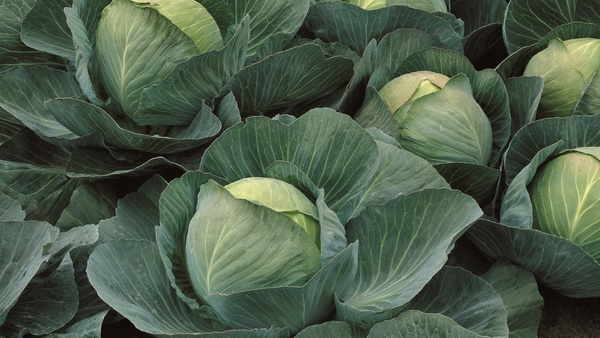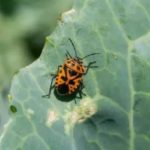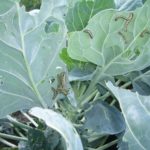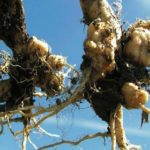Atrium cabbage variety was obtained by a hybrid method by Dutch breeders. This vegetable culture has gained immense popularity among gardeners and is widely used in cooking.
Table of contents
Description and characteristics of the variety
Atria is a sort of late ripening with medium-sized, tight, round heads. The main characteristics of the atrium cabbage are: oval leaves, dense, slightly curved, leaf color is bright green.On sheets noticeable wax coating. The weight of the head from an average of 1.5 kg to 8 kg. Aging period is 135–150 days.
Benefits
Below is a description of the advantages of this variety:
- excellent taste;
- wide use in cooking;
- impeccable presentation;
- good transportability;
- not prone to cracking;
- high disease resistance;
- high yield;
- storage time - six months.
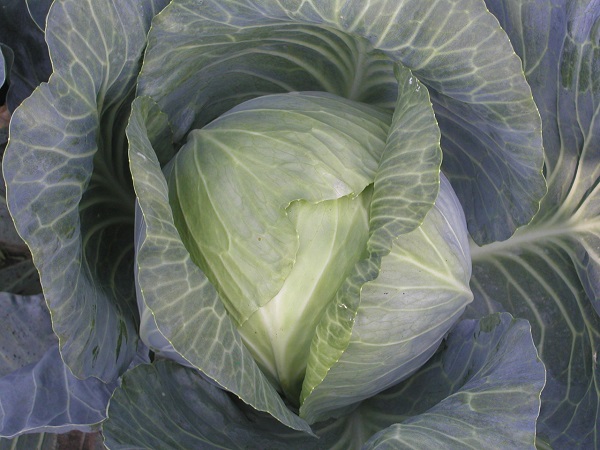
Atrium Cabbage Seed Preparation
Hardening is performed in the following way:
- Immerse the seed in hot water with a temperature of 50-60 degrees. Hold for 15–20 minutes, remove and pour ice-cold water for 2 minutes. After that, soak for 12 hours in a solution of nitroammofoski and rinse thoroughly.
- Wrap the seeds in a damp cloth and leave for 5-6 days. The napkin needs to be moistened to prevent drying. After 6 days, throw away all non-germinated seeds.
Sowing seeds
For planting seeds it is necessary to prepare a special soil. To do this in the same parts in wooden boxes you need to mix the turf soil, calcined river sand and peat. If there is no turf land, then you can use the land from the garden, after having previously disinfected it with a strong solution of manganese. Disinfection is necessary to protect young plants from disease. Be sure to feed the soil you need to make superphosphate and ash at the rate of:
- soil - 1 bucket;
- ash - 8–10 grams;
- superphosphate - 18 grams.
In the prepared soil to make grooves up to 2 cm in depth, sow the seeds at a distance of 1 cm from each other. Grooves cover the ground and ram a bit. Box with seeds put in a room with a temperature of +20 degrees. Seeds will sprout for 5 days. After that, seedlings are transferred to a room with a temperature of no more than +7 degrees. At non-observance of such temperature condition saplings perish.
After 10 days, when the first two leaves appear, the seedlings must be dived. For this it is best to take peat cups. The cups are filled with the same soil mixture as for planting seeds. Before transplanting seedlings are recommended to pour a weak solution of manganese. Carefully dig up seedlings so as not to damage the roots. It is more convenient to make a teaspoon. After transplantation, you need to move the seedlings closer to natural light and reduce the temperature in the room: in the daytime to 12 degrees, and at night to 6-8 degrees.
After 22-25 days, when there will be 4 leaves on the seedlings, they can be planted in open soil.

Feeding seedlings
When two leaves appear on the seedlings, the first feeding is necessary. For this you need to make a solution of the following ingredients:
- water - 1 liter;
- mineral fertilizer - 1/2 part of the pill.
This solution is sprayed with seedlings.
The solution is prepared in the following proportions:
- water - 10 liters;
- urea - 4 grams;
- potassium chloride - 3 grams;
- potassium sulfate - 3 grams.
Hardening seedlings
Before transplanting the seedlings need to harden. Perform the procedure of hardening for one and a half - two weeks before transplanting to a permanent place. Hardening is carried out in the following sequence:
- In the room open the window for 4-6 hours. We do it the first two days.
- Then for 7 days we take out the boxes with the seedlings on the balcony and bring them into the room only for the night.
- For a full day we leave the seedlings on the balcony 5 days before the transplant.
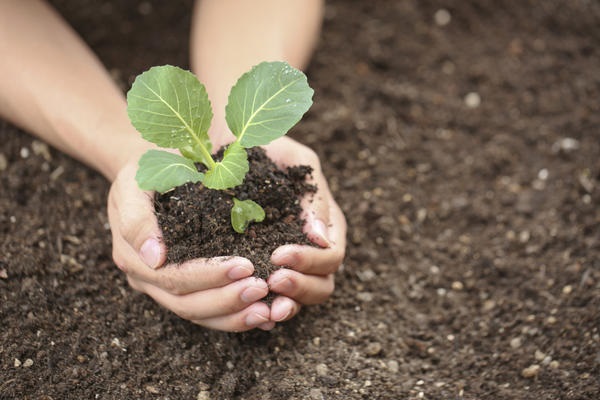
Soil preparation
To obtain a good harvest, it is important to properly prepare the soil and determine the planting location of the seedlings.Atria loves fertile peaty soil. The plot for the growth of this variety should be well lit. The lack of light will affect the formation of heads. It grows well in the garden, where tomatoes, peas, onions, potatoes, and cucumber previously grew.
The soil for growing cabbage is prepared in the fall. They dig up a bed to a depth of 25–30 cm and without loosening it, leave until spring. In the spring, the soil is leveled and dug to a depth of 15 cm, the weed removed. Then fertilizers are applied - per 1 sq. M. 4–6 kg meter of rotted mullein and dug a bed 8 cm deep before transplanting seedlings.
Transplanting seedlings in open ground
It is best to replant the atrium in open ground on May 15–20. By this time, the soil is already warm enough and the probability of frost is minimal. The distance between seedlings should be 35–40 cm. The aisle should be 60 cm wide. Transplantation is best done in the late afternoon. Seedlings dripped to the first leaflets. For better survival, seedlings should be sprayed for six days at least three times a day. It should also be borne in mind that the roots of the atria are still weak at this moment. Therefore, for two months after planting, weeds should be carefully removed and the soil loosened.
This will help the moisture last longer in the soil. During the summer should feed 5-6 times. For these purposes, well suited rotted mullein or chicken manure. The first feeding is carried out two weeks after the landing. The second is 35 days after transplantation. Further feeding is carried out once a month. Fertilizers need to be watered well to avoid burns.
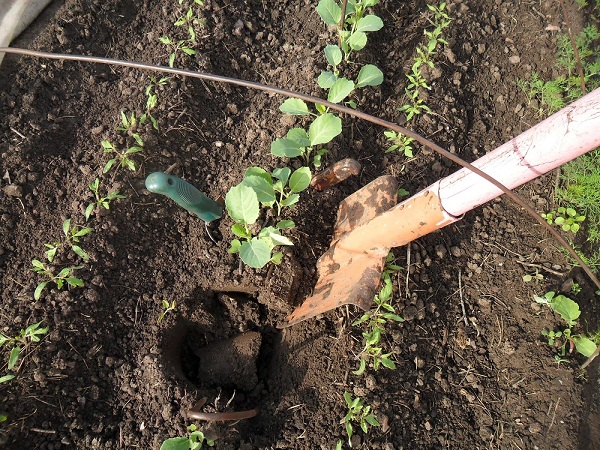
Diseases and methods of dealing with them
The most common diseases of Atria include:
- blackleg;
- kila
In these diseases, the root system is affected. In this case, the seedlings are pulled out, and the land is covered with lime on the site.
Another common disease is mildew. It hits the leaves. With this disease, it is necessary to normalize the humidity and treat the cabbage with a solution of Bordeaux mixture in the following ratio: for 1 bucket of water, 500 ml of solution.
Cabbage pests
Cabbage pests include:
- aphid;
- cruciferous bugs;
- caterpillars of the cabbage scoops;
- cabbage caterpillars;
- snails.
- Black leg cabbage seedlings
- Cruciferous bug
- Caterpillars on cabbage leaf
- Cabbage Aphid
- Quila on the root of cabbage
Harvesting
Crop harvested in late October - early November. Cabbage cut and spread on racks or in boxes in one row. The cabbage is put by the stalk up, the heads of cabbages should not be in contact with each other. The temperature in the basement should be no higher than +2 degrees, humidity 93–97%. With proper storage, it retains its taste and presentation until spring. It is noticed that in 1.5 months after harvesting, the taste of cabbage is noticeably improved. The fiber in the leaflet becomes less coarse, and it becomes juicy. Observing all the recommendations is not difficult to grow this kind of cabbage. Rich harvest!
